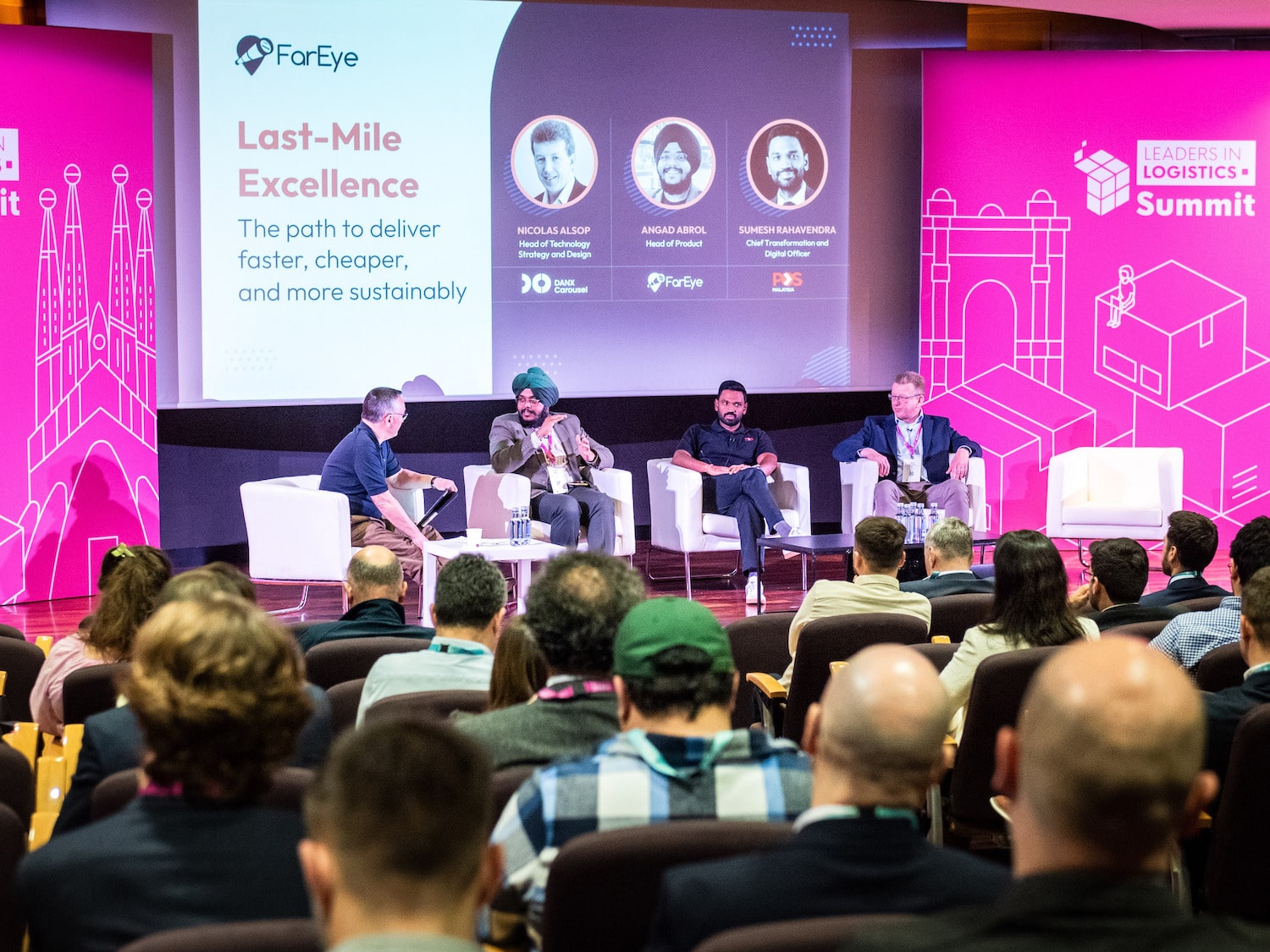Insight / Blog
How posts are thinking outside the (letter)box

It’s no secret that the postal landscape has completely changed over the past decade. Parcel volume has skyrocketed, growing at an annual rate of 20%. But with letter volume falling 4% each year and last-mile fulfilment costs increasing, postal profits are not growing in line with the boom in ecommerce.
This has been recognised publicly for a while. Rico Back, Royal Mail’s CEO, suggested as much in their latest half-year report, writing that for every 1% decline in letter volume, they need to grow their parcel volume by over 2% to cover the shortfall. Failing first-time deliveries, the size and diversity of parcels and the unrelenting challenge of other carriers has led to Post incumbents increasingly missing out on the financial gains they could and should command in the digital delivery world.
To restore their profit margin and solidify their domestic monopolies, posts have begun to think outside the (letter)box with a diverse range of innovations and pilots. Targeting operational efficiencies, delivery consolidation and technological advances have all led some of the world’s leading posts to different imaginative solutions to combat their profit decline. But which of these initiatives promise real bottom-line change?
Chick & Collect
In 2017, NZ Post experimented with an unexpected delivery partner: KFC. Leveraging their existing delivery structure, NZ Post handled KFC’s newly launched home delivery service. NZ Post used the pilot to experiment with on-demand delivery services, with end-to-end home fulfilment in as little as 30 minutes. Alongside their KFC venture, they also launched delivery pilots within the health sector, the construction sector and the hospitality sector – consolidating with their usual deliveries where possible.
Two years later, Swiss Post launched their own food offering ‘Brot-Post’ (Bread Post). In partnership with Swiss bakery Confiserie Eichenberger, Swiss Post regularly delivered bread to residents alongside their daily post. Swiss Post – like NZ Post before them – leveraged their existing infrastructure to supplement their core operations, while increasing their profit margins on postal deliveries. Like NZ Post, Swiss Post also aimed to diversify their home delivery product and establish an additional revenue stream to solidify their domestic dominance against new challengers.
Flying off the shelves?
These represent one potential avenue for margin improvements, by tacking new services on to existing delivery routes. But posts are also focusing on creating entirely new delivery channels. Swiss Post followed Brot-Post with a drone pilot, providing a rapid alternative to traditional courier services. The scheme focused on urgent medical items and lab samples as examples of deliveries which couldn’t wait for a cost-effective yet time-inefficient supply chain, and could not afford to rely on an urgent courier delivery, which could fulfil the delivery in the required time but at a much higher cost.
Other posts have also attempted to save operational cost by experimenting with drone deliveries. Croatia Post has an obligation to deliver to all Croatian homes across the nation, including the considerable number of small inhabited islands off the mainland. Historically, Croatia Post has fulfilled their postal obligations by the traditional – and expensive – routes of road and sea; they can now fulfil by air to significantly reduce costs. They’re not the only ones either; as drones have become a credible method of delivery, postal incumbents in Australia, Germany, Singapore, Ukraine and the US have all experimented with drone pilots, primarily in order to offer increased, near-instant speed at lower costs.
But outside of a few (usually medically urgent) scenarios, drone deliveries have mostly been limited to PR-boosting stunts. Aviation regulations, safety (Swiss Post have only recently relaunched following a year-long pause caused by a crash) and the final “metre” delivery itself are all stumbling blocks which may never be fully resolved. The hidden costs of drone deliveries also provide a real challenge – while cheaper than most urgent couriers, their costs per parcel are currently far higher than traditional methods of postal fulfilment.
Putting the post where the people will be
At Doddle, we know the problems of innovation pretty well ourselves. We tried to change the market with several ground-breaking products which weren’t quite right for the current shape of the delivery market. Trying to build additional processes and products on top of existing home delivery was the wrong approach. The key lies somewhere in-between pioneering innovation and better utilising existing assets. The postal behemoths hold a significant (yet under-developed) advantage over their challengers: networks of post offices across their respective nations.
Whereas NZ Post and Swiss Post were trying to add innovations onto their existing delivery routes, the real winners are the posts focusing on PUDO networks. Instead of asking consumers to adopt new processes, PUDO simplifies and enhances the product. PUDO networks offer the opportunity to bundle ecommerce into existing consumer behaviours. Asking consumers to buy KFC with their Amazon delivery or run into their garden to catch a t-shirt dropped from the sky is a form of disruption, certainly – but not the kind consumers love. Postal innovation needs to focus on benefiting the consumer in their everyday lives.
We know that people need to regularly visit supermarkets and buy food – so why not provide postal services where you know that consumers will be week in, week out? Targeting habitual footfall and providing an enhanced service (instead of a new one) allows posts to adapt to their consumer, rather than making the consumer adapt to them. Our recent partnership with Australia Post is a great example of a post pushing towards consumer-friendly innovation. Alongside their existing ecosystem of home delivery and PUDO services at their post offices, Doddle is working with Australia Post to establish partnerships with third-party high street retailers and supermarkets to extend the number of locations where customers can collect or return an online order with Australia Post. The overall solution is a consumer-focused mix of delivery innovation (self-service 24-hour technology combined with third-party locations) while leveraging their existing USP of post offices and home delivery.
Australia Post are not the first to create an innovative, diverse PUDO network – nor will they be the last. The dominance of Deutsche Post DHL Group in Germany illustrates the end result of building out such a solution: their consumer solution of thousands of DHL parcel shops, Packstations and third-party locations compliments their existing postal infrastructure and restricts any competitor establishing a significant market share against them.
But the real postal pioneers of PUDO are Post Nord (try saying that quickly for a tongue-twister). They provide services in three countries – Sweden, Norway and Finland – and provide the option of PUDO as the standard service. The dominant positioning of PUDO in the Nordics means that 70% of parcel deliveries are fulfilled into their locations, which cuts operating cost significantly and shows how much consumers appreciate the experience.
By establishing a PUDO network comprised of their existing infrastructure and new third-party locations, posts are beginning to re-establish their domestic dominance and truly affect their profitability by finally benefiting from the growth of ecommerce. It’s the easiest way for posts to diversify their delivery offer and should arguably be the biggest strategic focus to move towards increased profitability over the next few years. While gimmicky solutions may be headline-grabbers and offer an image of innovation and change, it’s the posts investing in diverse PUDO networks and offering an alternative to home delivery who will be the true winners of 2020 and 2021. They are ultimately the businesses thinking outside the letterbox and adapting to the modern world.
Related articles
Lessons from a decade in the first and last mile
A decade as Doddle taught us some lessons - and Blue Yonder helps us see what will matter in the next decade.
Important lessons from Leaders in Logistics 2024
Leaders in Logistics 24 dived into AI & automation, sustainability, changing ecommerce behaviours, emerging consumer expectations & predicted what the next decade had in store.
Postal results, reforms, and returns
Posts around the world are seeking reform, but how can they drive improved results in the short term?













